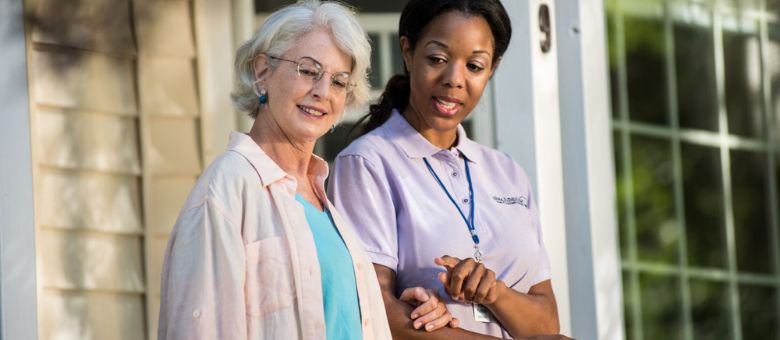
How to Assess Fall Risk
We suffer through plenty of bumps and bruises throughout our lives, but falling presents a severe concern for seniors. Assessing fall risk not only determines how likely seniors are to experience a fall but also identifies what conditions or objects in their environment can contribute to falling. Learning how to assess fall risk can help seniors and their families reduce the chances of falling in order to maintain a senior’s health and independence.
Why is it Important to Assess Fall Risk?
For seniors, a fall can lead to severe issues, from skin abrasions to broken bones and more. Professional assessment of fall risk seeks to help seniors avoid these health conditions by eliminating or reducing contributing risk factors. For example, risk factors can include the following, among many others:
- History of falls
- Dizziness
- Arthritis
- Impaired balance
- Vision problems
- Difficulty walking
- Reduced muscle tone
- Diabetes
- Chronic pain
- Depression
- Cognitive challenges
Seniors can also experience elevated environmental, physical, and medical risk factors. For instance, seniors who take multiple medications may experience side effects that increase their chances of falling. It’s best to start addressing fall risk at age 65 and continue to do so whenever seniors have fallen, feel unsteady, or worry about falling (again) in the future.
How to Assess Fall Risk
Doctors typically perform their own institutional fall risk assessments to determine a patient’s fall risk. A common theme is to move between sitting and standing or timing how long a patient can stand on one leg. However, you can use the following fall risk assessment methods to get a rough idea of your senior loved one’s tendency to fall. It's extremely important to never hide the fact that a fall was experienced when you visit your doctor. And be sure to tell your family members as well. Your safety is the top priority.
Visit an Optometrist
Seniors may struggle more with their vision than their balance, so it’s important to visit the eye doctor at least once, if not twice yearly, to ensure everything looks good. Eye health is equally important to overall health. Family members who are worried about seniors falling due to lack of sight can also discuss their concerns with the optometrist.
Perform Balance Exercises
Balance exercises contribute to better balance and coordination, especially when completed over a long period. However, you can use balance exercises to determine how well your senior loved one balances on one foot or performs a similar balancing act. Consulting with a physical therapist may help introduce seniors to exercises and stretches that can help equalize that balance. Another great resource is the exercise programs offered at your local senior center or YMCA. Classes such as chair Yoga, water aerobics, and silver sneakers all focus on core strength which helps your balance.
Review Medications With a Physician
Medications can contribute to fall risk if they interact or as a side effect. Discuss your concerns with your physician and explore alternatives if necessary. Sometimes, there’s not always an easy fix, but reducing your fall risk can go a long way in keeping you healthy for longer.
Evaluate Fall Hazards at Home
Finally, assessing your senior loved one’s home for tripping hazards can help ensure their safety as they age in place. Look for rugs that can easily get scrunched up, thresholds that stick out further than others, and slippery mats that can turn a quick stride into a severe injury. A free in-home safety assessment is always offered along with your consultation anytime Visiting Angels Cincinnati West is invited into your home.
How Visiting Angels of West Cincinnati Reduces Fall Risk
Visiting Angels of West Cincinnati’s fall prevention program connects seniors with the resources they need to understand the danger of falls and how they can get help to reduce their fall risk.
We also provide a free Safe & Steady Fall Prevention Resource Guide for seniors and their families. Download this guide for a checklist to help you discover potential risk factors in your own environment that could put you at higher risk of falls.
If you’d like to learn more about our fall prevention services or any of our senior home care services, contact us to schedule a free consultation.
